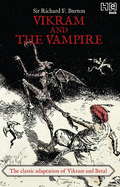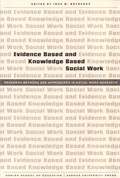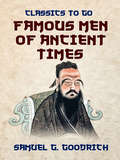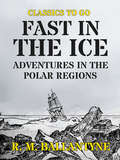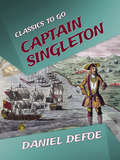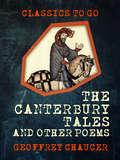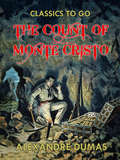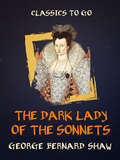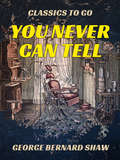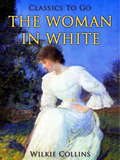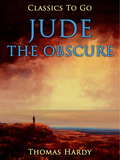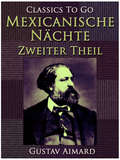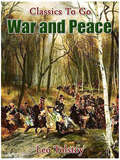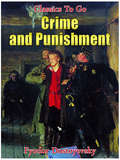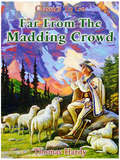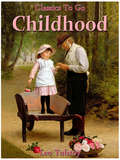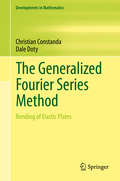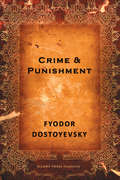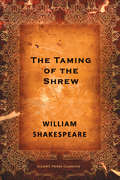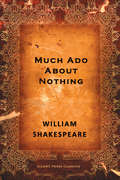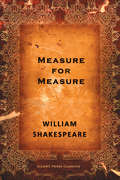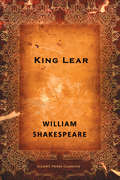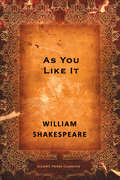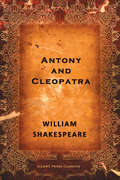- Table View
- List View
Vikram And The vampire: Or, Tales Of Hindu Devilry
by Sir Richard F. Burton‘O King Vikram, listen to the true story which I am about to tell thee…’ Thus begins Vikram and the Vampire, British Orientalist Richard F. Burton’s classic retelling of the Sanskrit Vetala Panchavimshati (Twenty-five Tales of the Betal), the ever-popular tales about the legendary king Vikramaditya and the vampire, or Betal, who vexes the king with stories that pose searching questions about the morals of life in ancient India. Although based on earlier oral traditions, one of the stories’ first retelling is found in the eleventh-century Kathasaritsagara (Ocean of the Stream of Stories). Gods and demons, ghouls and kings, abound in these stories that capture mythic India at its best and bring to life an ancient world. An intrepid explorer and traveller, and an anthropologist with avid curiosity about far-flung cultures and peoples, Burton travelled to India in 1842, just as the first Afghan war came to an end. His interest in the region took him on journeys across the Indian subcontinent, often disguised as a Muslim man. An Indophile, he was at home with the Indian classics, and this retelling provided some of the first insights into these texts to Westerners. This new reissue of Burton’s adaptation of the classic tales, along with the 34 original black-and-white illustrations by Ernest Griset that accompanied the first edition, includes his original notes on the text and his introduction to the volume.
Evidence Based and Knowledge Based Social Work: Research Methods and Approaches in Social Work Research (PDF)
by Inge M. BryderupPolicymakers in welfare democracies throughout the world are raising questions as to whether welfare systems deliver what the public expects, and focus attention on increasing costs. Social workers need more evidence and knowledge about an increasing diversity of social work practices. Users of social welfare are increasingly individualised and made responsible for choosing and delivering their own service through contracts and this makes politicians, social workers and users more interested in evidence and knowledge about social services -- even though these interests are often conflicting. These tendencies might be part of the reasons why the evaluation of social work practice seems to be characterised at present by a variety and diversity of research methods, approaches and theories. Politicians, social workers and researchers more and more often use the term knowledge-based instead of evidence-based when they describe the practice they aim to develop through research. This is often an expression of a broader perception of research approaches that can help to produce the required knowledge. The contributors to this book hold a diversity of positions on evidence-based and knowledge-based practice.
Famous Men of Ancient Times: By The Author Of Peter Parley's Tales (Classics To Go)
by Samuel GoodrichExcerpt: "Confucius - From Famous Men of Ancient Times by S. G. Goodrich.... This greatest of Chinese philosophers was born in the petty kingdom of Lu, now the province of Shantung, in the year 549 B. C.-the same year that Cyrus became king of the Medes and Persians. The Chinese, in their embellishments of his history, tell us that his birth was attended with heavenly music, filling the air; that two dragons were seen winding over the roof; that five old men appeared at the door, and after consulting together, suddenly vanished; and that a unicorn brought to his mother a tablet in his mouth. It is also related that when he was born, five characters were seen on his breast, declaring him to be "the maker of a rule for settling the world." These and other marvels are a part of the established biography of the philosopher, as received by the Chinese...."
Fast in the Ice Adventures in the Polar Regions: Or Adventures In The Polar Regions (1870) (Classics To Go)
by R. M. BallantyneOne day, many years ago, a brig cast off from her moorings, and sailed from a British port for the Polar Seas. That brig never came back. Many a hearty cheer was given, many a kind wish was uttered, many a handkerchief was waved, and many a tearful eye gazed that day as the vessel left Old England, and steered her course into the unknown regions of the far north. (Goodreads)
Captain Singleton: The Life, Adventures, And Piracies Of Captain Singleton (Classics To Go)
by Daniel DefoeThe book tells the story of Bob Singleton, who had been kidnapped as a boy from a good home and grew up with no real home. He came aboard a ship and eventually ended up being cast on an island with other crewmen. They managed to get to Africa and about the first half of the novel deals with the company's travel through Africa until they found a port from which they could get back to Europe. After their return there Singleton became member of another ships' crew and after a mutiny they led the lives of pirates with Singleton as their captain, which mostly covers the last half of the book, finishing in Singleton and a friend being repentant, leaving of their (successful) lives as pirates and returning home in disguise to find a peaceful life. (Excerpt from Goodreads)
The Canterbury Tales, and Other Poems: With Other Poems Of Chaucer And Spenser; Edited For Popular Perusal, With Current Illustrative And Explanatory Notes (classic Reprint) (Classics To Go)
by Geoffrey ChaucerThe Canterbury Tales is a collection of 24 stories written in Middle English by Geoffrey Chaucer between 1387 and 1400. In 1386, Chaucer became Controller of Customs and Justice of Peace and, in 1389, Clerk of the King's work. It was during these years that Chaucer began working on his most famous text, The Canterbury Tales. The tales (mostly written in verse, although some are in prose) are presented as part of a story-telling contest by a group of pilgrims as they travel together from London to Canterbury to visit the shrine of Saint Thomas Becket at Canterbury Cathedral. The prize for this contest is a free meal at the Tabard Inn at Southwark on their return. (Wikipedia)
The Count of Monte Cristo: In English Translation (Classics To Go)
by Alexandre DumasThe book is considered a literary classic today. According to Luc Sante, "The Count of Monte Cristo has become a fixture of Western civilisation's literature, as inescapable and immediately identifiable as Mickey Mouse, Noah's flood, and the story of Little Red Riding Hood. (Wikipedia)
The Dark Lady of the Sonnets: With Prefaces (Classics To Go)
by George ShawThe Dark Lady of the Sonnets is a 1910 short comedy by George Bernard Shaw in which William Shakespeare, intending to meet the "Dark Lady", accidentally encounters Queen Elizabeth I and attempts to persuade her to create a national theatre. The play was written as part of a campaign to create a "Shakespeare National Theatre" by 1916. (Excerpt from Wikipedia)
You Never Can Tell: A Pleasant Play (Classics To Go)
by George Bernard ShawYou Never Can Tell is an 1897 four-act play by George Bernard Shaw that debuted at the Royalty Theatre. It was published as part of a volume of Shaw's plays entitled Plays Pleasant. In June 2011, the play was revived at the Coliseum Theatre in Aberystwyth, Wales, where it had been performed exactly one century earlier. (Excerpt from Wikipedia)
The Woman in White: A Novel (part Two) And Short Stories: The Dead Alive; The Fatal Cradle; Fatal Fortune; Blow Up With The Brig (Classics To Go #Vol. 1)
by Wilkie CollinsWilliam Wilkie Collins (8 January 1824 – 23 September 1889) was an English novelist, playwright, and author of short stories. His best-known works are “The Woman in White”, “The Moonstone”, “Armadale”, and “No Name”. “The Woman in White” is Wilkie Collins' fifth published novel, written in 1859. It is considered to be among the first mystery novels and is widely regarded as one of the first (and finest) in the genre of "sensation novels". The story is sometimes considered an early example of detective fiction with the hero, Walter Hartright, employing many of the sleuthing techniques of later private detectives. The use of multiple narrators draws on Collins's legal training, and as he points out in his Preamble: "the story here presented will be told by more than one pen, as the story of an offence against the laws is told in Court by more than one witness". In 2003, Robert McCrum writing for The Observer listed The Woman in White number 23 in "the top 100 greatest novels of all time", and the novel was listed at number 77 on the BBC's survey The Big Read. (Excerpt from Wikipedia)
Jude the Obscure
by Thomas HardyPowerful and controversial from its 1895 publication to the present, Jude the Obscure scandalized Victorian critics, who condemned it as decadent, indecent, and degenerate. Between its frank portrayals of sexuality and its indictments of marriage, religion, and England's class system, the novel offended a broad swath of readers. Its heated reception led the embittered author to renounce fiction, turning his considerable talents ever afterward to writing poetry.Hardy's last novel depicts a changing world, where a poor stonemason can aspire to a university education and a higher place in society--but where in reality such dreams remain unattainable. Thwarted at every turn, Jude Hawley abandons his hopes, is trapped into an unwise marriage, and pursues a doomed relationship with his free-spirited cousin, Sue Bridehead. The lovers find themselves equally incapable of living within the conventions of their era and of transcending its legal and moral strictures. Hailed by modern critics as a pioneering work of feminism and socialist thought, Hardy's tragic parable continues to resonate with readers.
Mexikanische Nächte - Zweiter Teil (Classics To Go)
by Gustave AimardAus dem Buch: "Am 2. Juli 18.., kamen gegen vier Uhr Nachmittags, in dem Augenblicke, wo die schon tief am Horizonte stehende Sonne nur noch schräge Strahlen auf die von der Hitze durchdrungene Erde wirft und die sich erhebende Brise die glühende Atmosphäre zu erfrischen beginnt, zwei gut berittene Reisende aus einem dichten Jucca-, Bananen- und Bambusgehölz und schlugen einen staubigen Weg ein, der in ununterbrochenen Stufenreihen zu einem Thale führte, worin ein klarer, durch das Grün sich hinschlängelnder Bach eine sanfte Kühlung unterhielt..."
A Damsel in Distress: Revised Edition Of Original Version (Classics To Go)
by P. G. WodehouseGolf-loving American composer George Bevan falls in love with a mysterious young lady who takes refuge in his taxicab one day; when he tracks her down to a romantic rural manor, mistaken identity leads to all manner of brouhaha...(Excerpt from Wikipedia)
War and Peace: A Historical Novel, Volume 1... (Classics To Go)
by Leo TolstoyThe standard Russian text of "War and Peace" is divided into four books (fifteen parts) and an epilogue in two parts. "War and Peace" has a large cast of characters, the majority of whom are introduced in the first book. Some are actual historical figures, such as Napoleon and Alexander I. While the scope of the novel is vast, it is centred around five aristocratic families. The plot and the interactions of the characters take place in the era surrounding the 1812 French invasion of Russia during the Napoleonic Wars. (Excerpt from Wikipedia)
Crime and Punishment: Revised Edition Of Original Version (Classics To Go #394)
by Fyodor DostoyevskyRodion Romanovich Raskolnikov, a former student, lives in a tiny garret on the top floor of a run-down apartment building in St. Petersburg. He is sickly, dressed in rags, short on money, and talks to himself, but he is also handsome, proud, and intelligent. He is contemplating committing an awful crime, but the nature of the crime is not yet clear. He goes to the apartment of an old pawnbroker, Alyona Ivanovna, to get money for a watch and to plan the crime. Afterward, he stops for a drink at a tavern, where he meets a man named Marmeladov, who, in a fit of drunkenness, has abandoned his job and proceeded on a five-day drinking binge, afraid to return home to his family. Marmeladov tells Raskolnikov about his sickly wife, Katerina Ivanovna, and his daughter, Sonya, who has been forced into prostitution to support the family. Raskolnikov walks with Marmeladov to Marmeladov’s apartment, where he meets Katerina and sees firsthand the squalid conditions in which they live.
Far from the Madding Crowd: Revised Edition Of Original Version (Classics To Go)
by Thomas HardyGabriel Oak is a young shepherd. With the savings of a frugal life, and a loan, he has leased and stocked a sheep-farm. He falls in love with a newcomer eight years his junior, Bathsheba Everdene, a proud beauty who arrives to live with her aunt, Mrs. Hurst. She comes to like him well enough, and even saves his life once, but when he makes her an unadorned offer of marriage, she refuses; she values her independence too much and him too little. Gabriel's blunt protestations only serve to drive her to haughtiness. After a few days, she moves to Weatherbury, a village some miles off. When next they meet, their circumstances have changed drastically. An inexperienced new sheep dog drives Gabriel's flock over a cliff, ruining him. After selling off everything of value, he manages to settle all his debts, but emerges penniless. He seeks employment at a work fair in the town of Casterbridge, (a fictionalised version of Dochester). When he finds none, he heads to another fair in Shottsford, a town about ten miles from Weatherbury. On the way, he happens upon a dangerous fire on a farm and leads the bystanders in putting it out. When the veiled owner comes to thank him, he asks if she needs a shepherd. She uncovers her face and reveals herself to be none other than Bathsheba. She has recently inherited the estate of her uncle and is now a wealthy woman. Though somewhat uncomfortable, she hires him. Meanwhile, Bathsheba has a new admirer: the lonely and repressed William Boldwood. Boldwood is a prosperous farmer of about forty whose ardour Bathsheba unwittingly awakens when – her curiosity piqued because he has never bestowed on her the customary admiring glance – she playfully sends him a valentine sealed with red wax on which she has embossed the words "Marry me". Boldwood, not realising the valentine was a jest, becomes obsessed with Bathsheba, and soon proposes marriage. Although she does not love him, she toys with the idea of accepting his offer; he is, after all, the most eligible bachelor in the district. However, she postpones giving him a definite answer. When Gabriel rebukes her for her thoughtlessness, she fires him. When her sheep begin dying from bloat, she discovers to her chagrin that Gabriel is the only man who knows how to cure them. Her pride delays the inevitable, but finally she is forced to beg him for help. Afterwards, she offers him back his job and their friendship is restored... (Excerpt from Wikipedia)
Childhood: Revised Edition Of Original Version (Classics To Go #306)
by Leo Tolstoy"Childhood" is the first in a series of three novels and is followed by "Boyhood" and "Youth". Published when Tolstoy was just twenty-three years old, the book was an immediate success. "Childhood" is an exploration of the inner life of a young boy, Nikolenka, and one of the books in Russian writing to explore an expiressionistic style, mixing fact, fiction and emotions to render the moods and reactions of the narrator. (Excerpt from Wikipedia)
The Generalized Fourier Series Method: Bending of Elastic Plates (Developments in Mathematics #65)
by Christian Constanda Dale DotyThis book explains in detail the generalized Fourier series technique for the approximate solution of a mathematical model governed by a linear elliptic partial differential equation or system with constant coefficients. The power, sophistication, and adaptability of the method are illustrated in application to the theory of plates with transverse shear deformation, chosen because of its complexity and special features. In a clear and accessible style, the authors show how the building blocks of the method are developed, and comment on the advantages of this procedure over other numerical approaches. An extensive discussion of the computational algorithms is presented, which encompasses their structure, operation, and accuracy in relation to several appropriately selected examples of classical boundary value problems in both finite and infinite domains. The systematic description of the technique, complemented by explanations of the use of the underlying software, will help the readers create their own codes to find approximate solutions to other similar models. The work is aimed at a diverse readership, including advanced undergraduates, graduate students, general scientific researchers, and engineers.The book strikes a good balance between the theoretical results and the use of appropriate numerical applications. The first chapter gives a detailed presentation of the differential equations of the mathematical model, and of the associated boundary value problems with Dirichlet, Neumann, and Robin conditions. The second chapter presents the fundamentals of generalized Fourier series, and some appropriate techniques for orthonormalizing a complete set of functions in a Hilbert space. Each of the remaining six chapters deals with one of the combinations of domain-type (interior or exterior) and nature of the prescribed conditions on the boundary. The appendices are designed to give insight into some of the computational issues that arise from the use of the numerical methods described in the book.Readers may also want to reference the authors’ other books Mathematical Methods for Elastic Plates, ISBN: 978-1-4471-6433-3 and Boundary Integral Equation Methods and Numerical Solutions: Thin Plates on an Elastic Foundation, ISBN: 978-3-319-26307-6.
Crime & Punishment
by Fyodor DostoyevskyDriven by the belief that he is meant to kill, Raskolnikov brutally murders an elderly pawnbroker and her sister. But when talk of the unsolved murders consumes the city, Raskolnikov's guilt overtakes him and he wanders the streets in a feverish state, leading police detective Porfiry to suspect his involvement. As the investigation closes in on him, Raskolnikov seeks solace in the company of Sonya, a virtuous prostitute who urges him to confess his crime and seek redemption. Crime and Punishment is a revealing portrait of a man confronting, for the first time, his morality and the moral consequences of his actions. The novel is widely recognized as author Fyodor Dostoyevsky's argument against the radical behaviours practised by nineteenth-century Russian Nihilists.
The Taming of the Shrew
by William ShakespeareThe marriage hopes of the beautiful Bianca depend on her older and more disagreeable sister, Katherina, making her match first.
Much Ado About Nothing
by William ShakespeareTwo couples—Benedick and Beatrice, and Hero and Claudio—must overcome deception, gossip, and, occasionally, their own misplaced pride if their love is to persevere.
Measure for Measure
by William ShakespeareWhen the Duke of Vienna leaves the city under the governance of Angelo, a strict judge, Claudio and Juliet find themselves in violation of Vienna's severe morality laws. With Claudio's life at risk, Isabella, his sister and a novice nun, agrees to plead the case before Angelo. The duke, disguised as a friar, helps Isabella when it becomes apparent Angelo will only help if she compromises herself, and her beliefs. One of Shakespeare's more complex comedies, Measure for Measure examines ethical and moral issues that still resonate today.
King Lear: A Tragedy
by William ShakespeareKing Lear, growing old and too tired to reign, decides to divide his realm amongst his three daughters, leaving the largest share to the one who loves him the most. His two eldest daughters, Goneril and Regan, foolish and deceitful children, are rewarded for their insincere flattery. His youngest daughter, Cordelia, however, speaks honestly and truthfully, which enrages the old king. He disinherits Cordelia, and then drives himself to madness, left to wander the heath with only his Fool, his servant Caius, and the madman Tom O'Bedlam for company. Once reunited with Cordelia, Lear is too late repents his rashness, and must face the tragic consequences of his choices.
As You Like It: A Comedy
by William ShakespeareAs You Like It follows its heroine Rosalind as she flees persecution in her uncle's court, accompanied by her cousin Celia to find safety and, eventually, love, in the Forest of Arden. In the forest, they encounter a variety of memorable characters, notably the melancholy traveller Jaques who speaks many of Shakespeare's most famous speeches (such as "All the world's a stage", "too much of a good thing" and "A fool! A fool! I met a fool in the forest").
Antony and Cleopatra: A Tragedy
by William ShakespeareAntony, the soldier of Rome, and Cleopatra, the queen of Egypt, struggle with tragic consequences against the power and authority of the emerging Roman Empire.
